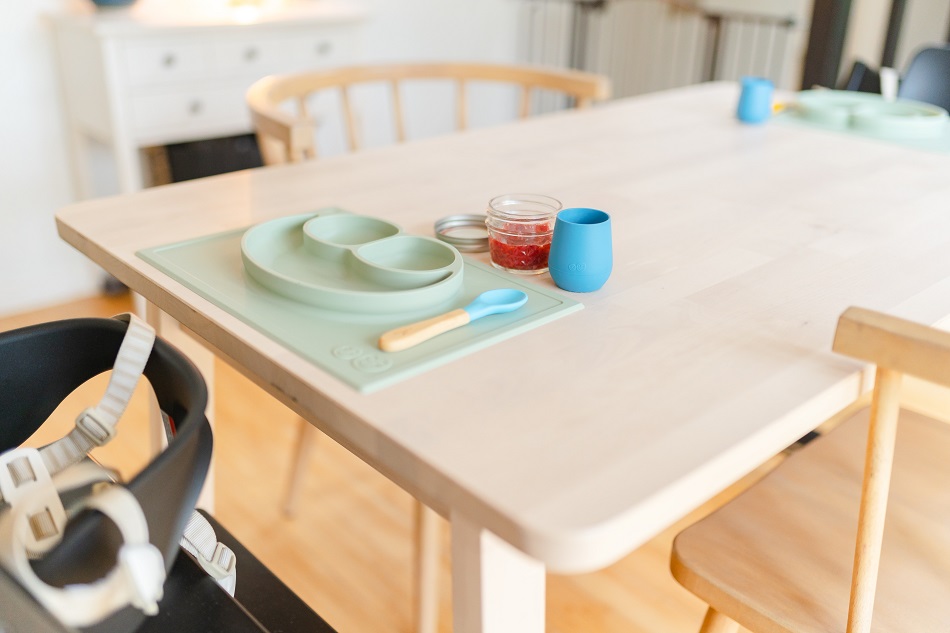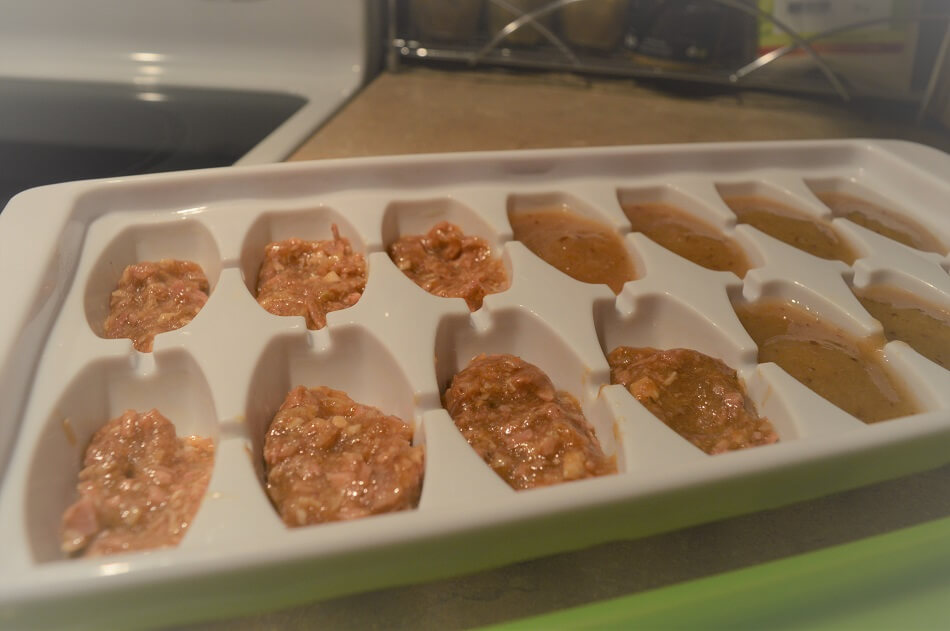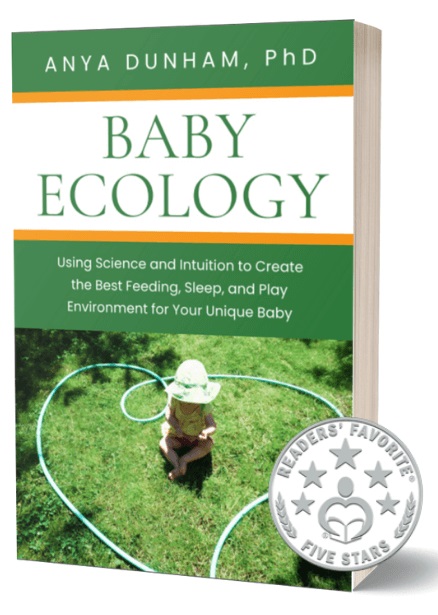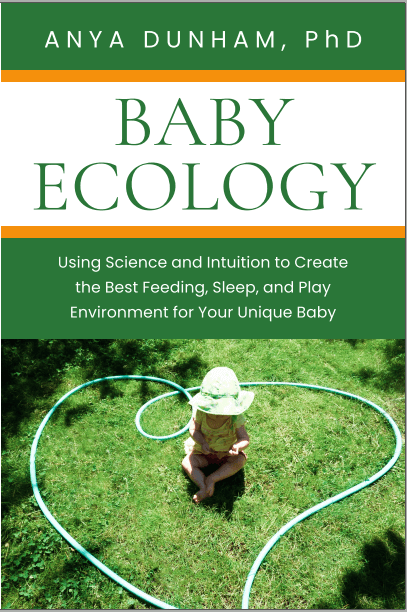Baby Ecology book is here! Learn more
Baby Ecology book is here!
- Home
- Baby-led feeding
- Spitting food out
Baby spits food out? It's likely a good sign.
by Anya Dunham, PhD
When your baby spits food out, they may be well on their way to liking it. Here is why.

Does your baby take a spoonful or a bite and promptly spit it out, making a funny face, no matter how delicious the food? Fear not: when your baby spits food out, it's likely a good sign!
In my award-winning book, Baby Ecology you'll find a comprehensive chapter on feeding.
How babies become ‘picky eaters'
Most babies are adventurous and eager when they first begin eating solid foods. The majority of families describe their 4- to 6-month-olds as “not picky.”1 But as the first year goes by, strong food likes and dislikes tend to appear, and by 12 months many babies are characterized as 'picky eaters'.1,2 What happened?
What many parents don’t know is that babies may need 8 to 15 tastes of a new food, in different meals and in a supportive, no-pressure setting, before they become accustomed to the new flavor.3,4 These repeated exposures need to be actual bites, not just seeing or playing with food - but putting food in their mouth and spitting it back up does count!
In one study, when offered an initially disliked vegetable over 8 subsequent meals, most babies learned to like it as much as their favourite vegetable; 9 months later, they still liked it!4 But most parents offer a food item only a few times, and often just once, before deciding their baby does not like it.2
Babies may need 8 or more tastes of a new food before they accept (and usually grow to like) the new flavour.
Breastfed babies are more likely to accept a new food when it’s first offered because they have already been exposed, through breastmilk, to a variety of flavour experiences. But after several repeated exposures, formula-fed babies accept novel flavours as well.5
When baby spits food out, she may be learning to like it
So, a baby who spits food out is not necessarily picky – in fact, she is doing exactly what she needs to do: trying the food, tasting its flavor, and exploring its texture. Although nothing guarantees that she will love this particular food when she grows up, there is a very good chance that after several tastes, it will become part of her diet.
When your baby puts food in his mouth and spits or takes it back out, it’s a good thing: he’s tasting it, building up experiences he might need to learn to like it.
If you quickly assume your baby doesn’t like something and don’t offer it much (or at all) again, it’s easy to run out of wholesome options and get stuck in a rut of less nutritious ones, like cereals and baby puree pouches.
(It is, of course, okay to give your baby commercial cereals and purees occasionally, but babies need a variety of nutrient-dense, iron-rich foods, like meats, egg yolk, fish, and lentils. One challenge with these foods is that they tend to be naturally dry in texture for young babies to comfortably eat. Puree, mash or mince them with gravy or vegetables to soften and moisten them.)
Exploring tastes takes time and patience
Continue offering foods your baby initially rejected. Give him plenty of opportunities to experiment and master eating. One of the best ways to do this is baby-led feeding.
When your baby spits food out or puts it in his mouth and takes it back out, remember it’s a good thing. Making “funny” faces during eating is not necessarily a sign of dislike either: your baby simply has very sensitive taste buds! Some exploring of food is good, too, as it helps your baby engage all his senses and learn about the joy of eating. However, just playing with food or throwing is usually a sign of a baby being full.
What to do with ‘rejected’ food
It can be a bit upsetting when your baby rejects food, especially if it’s a special meal you cooked or something you were excited for your baby to try. But don’t try to coerce your baby to eat it. Instead, simply save the extras to try later that day or, if it’s something that freezes well, puree, mash or mince it and freeze in an ice cube tray. Once extra food is frozen, transfer the cubes into a re-sealable freezer bag, then thaw them in the fridge a few at a time when you want to offer the food again.
! (However, always discard the leftovers from baby’s serving bowl for food safety: your baby's saliva mixed with the unused food can feed harmful bacteria.)
 Turkey dinner and apple sauce 'rejects' ready for freezing in an ice cube tray, in hopes my baby eats them later. (These were indeed devoured the following week!)
Turkey dinner and apple sauce 'rejects' ready for freezing in an ice cube tray, in hopes my baby eats them later. (These were indeed devoured the following week!)But what if baby spits out everything?
Audrey wrote: "My daughter is 7 months old and refuses solids. I’ve tried many types of commercial and homemade baby foods. She spits everything right out. I don’t know what to do."
Continue offering solid foods two or three times a day and continue breast- or formula-feeding on demand. Offer foods when your baby is alert, content, and not too tired. Try experimenting with textures: if you’ve been trying smooth purees so far, try a slightly more lumpy consistency or cut very soft vegetables or fruits into sticks. If your baby is having fewer wet and soiled diapers than before or you have concerns about her nutritional status or behaviour, be sure to see her health care practitioner.
You might also be interested in:
References
References
1. Carruth BR et al (2004) Prevalence of picky eaters among infants and toddlers and their caregivers’ decisions about offering a new food. Journal of the American Dietetic Association 104: 57-64
2. Skinner JD et al (1998) Mealtime communication patterns of infants from 2 to 24 months of age. Journal of Nutrition Education 30(1): 8-16
3. Nicklaus S (2011) Children's acceptance of new foods at weaning. Role of practices of weaning and of food sensory properties. Appetite 57(3): 812-825
4. Maier A et al (2007) Effects of repeated exposure on acceptance of initially disliked vegetables in 7-month old infants. Food Quality and Preference 18(8): 1023-1032
5. Hausner H et al (2010) Breastfeeding facilitates acceptance of a novel dietary flavour compound. Clinical Nutrition 29(1): 141-148
Using hundreds of scientific studies, Baby Ecology connects the dots to help you create the best environment for sleep, feeding, care, and play for your baby.
Warmly,
Anya



